Overview
An overview statement about the focus of our research can be found on the home page. Some of the research themes we are working on include:
- Flow and morphodynaics of gravel-bed rivers
- Dynamics of fine sediment in rivers, estuaries, and the deep ocean
- Distributary system mechanics (such as fans and deltas)
- Stratified flows (such as river mouth discharges and density currents)
Project Examples
The role of turbulent field conditions on incipient motion
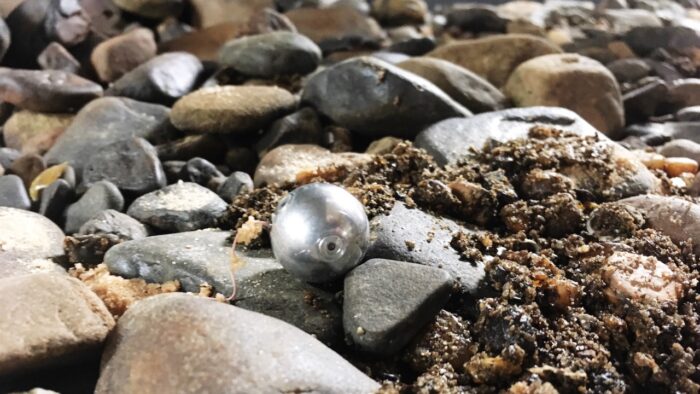
Sediment particles in the bed of a river move under the action of gravity and forces generated by flowing water. Yet, predicting exactly when a grain of sediment will move is difficult to do. In this project, we are seeking to (1) identify the time-varying hydrodynamic signatures that lead to the generation of forces that are high enough, and operate over a long enough time period, to cause sediment to move from a stable resting position; and (2) to quantify how this signature changes under a range of flow and bed conditions.
Sorting of fine sediment in mud deposits
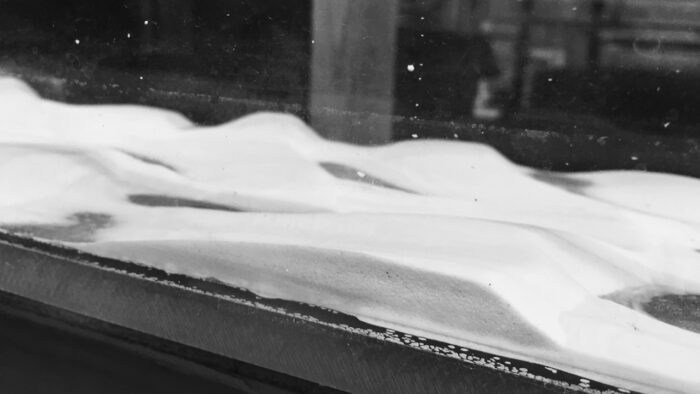
Paleoceanographers hypothesized that the mean size of coarser silt (10-63 µm) in mixed clay-silt deposits is directly related to the velocity of deep-sea bottom currents (McCave et al., 1995). This flow speed proxy has been termed ‘sortable silt’ because the coarser silt is interpreted to size-sort by selective entrainment and deposition. However, the sortable silt hypothesis has little field or laboratory validation. We are experimentally testing the relationship between velocity of currents transporting and depositing a mixture of clay and silt. Student: Jeff Culp. Collaborators: Brian Romans (PI) and Drew Parent. Funding Source: ACS Petroleum Research Fund. Image: Mud deposits on the bottom of a flume in a unidirectional current.
Channel formation and avulsion in fans with cohesive sediment and sand
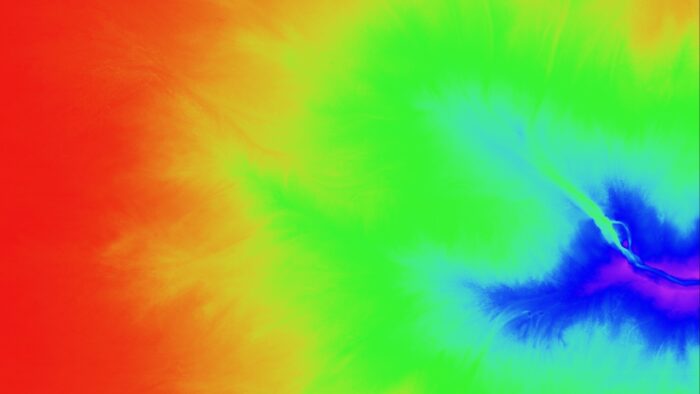
Alluvial fans are active landscapes that are built and modified by deposition of sediment and the switching or avulsing of a rivers location from on place to the next over the arc of the fan. The dynamics of such systems increase hazard potential to infrastructure and human life in mountainous environments. In this project we are examining the general avulsion cycle of experimental alluvial fans with mixtures of cohesive sediment and sand over a range of boundary conditions. The purpose of doing so is to experimentally produce realistic fan dynamics that can then be used to better understand and quantify the sensitivity and risk associated with these landscapes to a changing climate. Funding Source: ExxonMobil Upstream Research Company. Image: Topography scan of developing system. Students: Nilay Iscen.
Mud Floc Transformations In Turbulent Flows: Driving Influences And Modeling
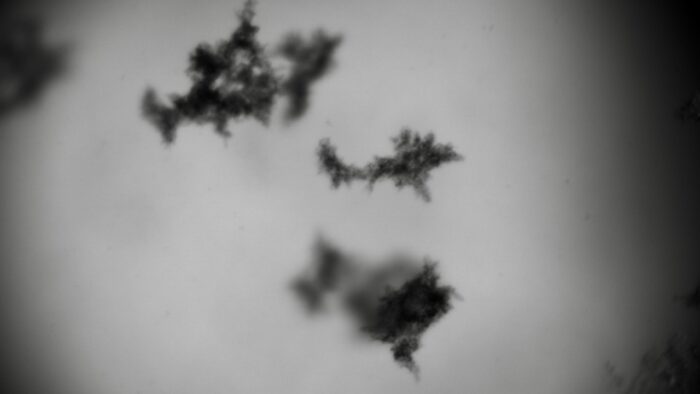
This project investigates the impact of flocculation on sediment transport and morphodynamics in estuaries, deltas, and turbidity currents. The cohesive forces at work within mixtures of clay and silt sized inorganic and organic mud impact, (1) the depositional rates of suspended sediment through the flocculation process, and (2) the erosion mechanics of a mud bed through time and depth dependent erosivity. The net result is that predicting and interpreting mud deposits in estuarine and turbidity current settings is complicated by the fact that the settling velocity and incipient motion condition are not necessarily directly related to the size of the individual particles in a deposit. The goal of this project is to improve understanding and modeling of flocculation processes in turbulent flows during deposition and erosion of mud. Funding Source: ExxonMobil Upstream Research Company. Image: Mud flocs in a turbulent field after 6 hours of mixing at 400 mg/l. Students: Duc Tran and Rae Kuprenas.
Mud deposition within gravel beds
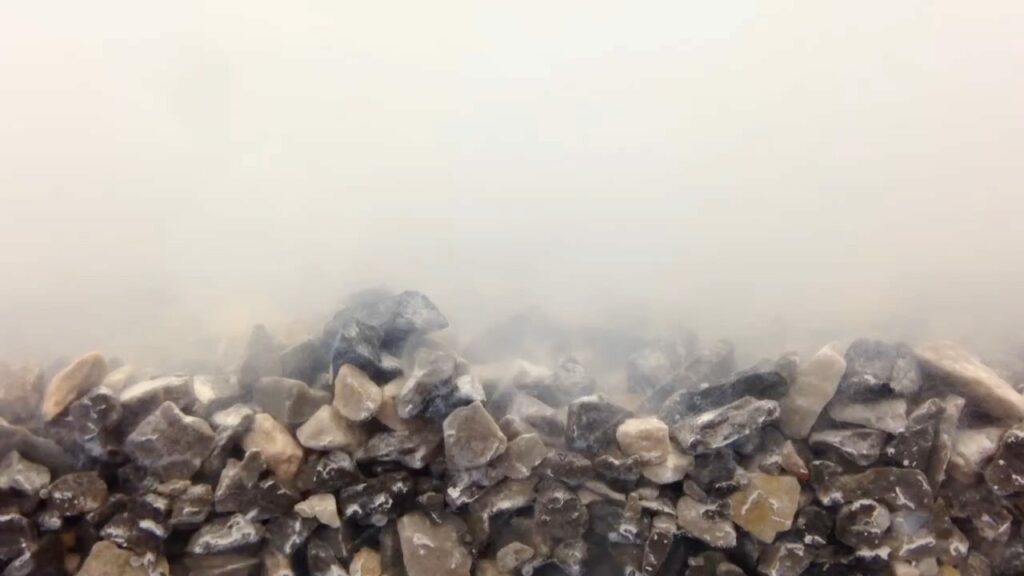
Pulses of fine sediment composed of sand, silt, and clay can be introduced to gravel bed rivers through runoff from burn-impacted hillslopes, landslides, bank failure, or the introduction of reservoir sediment as a result of sluicing or dam decommissioning. Yet, what exactly happens to pulses of suspended is unclear, and engineers and earth scientists have tractable method of estimating the loss of suspended clay to gravel beds. This project uses laboratory-based experiments to investigate and quantify the loss of suspended clay to gravel open and sand-filled framework gravel beds. Image: A muddy suspension flowing over an open framework gravel bed in one of the BEHL flumes. Student: Christian Mooneyham.
Autogenic Morphodynamics in Supercritical Submarine Fans

Submarine fans are complex distributive channel environments that represent the final sediment sink for the fluvial/marine system. As with other types of distributive systems, e.g., deltas and alluvial fans, submarine fans likely have an internal cyclicity associated with autogenic channel formation and abandonment. This research investigates the hydraulic and sediment transport conditions and processes associated with the self-formed submarine channels and terminal deposits that avulse and migrate in time to build the larger fan surface. The work is being conducted in a laboratory tank and couples density current velocity measurements and high-resolution surface mapping to capture the density current hydraulics and morphology evolution of the fan surface in space and time. These experiments aim to improve understanding of fan building under supercritical turbidity currents. Funding Source: ExxonMobil Upstream Research Company. Image: overhead picture of self-formed subaqueous channel and fan. Student: Paul Hamilton.
Scaling of Deposition Rates from Buoyant River Discharges
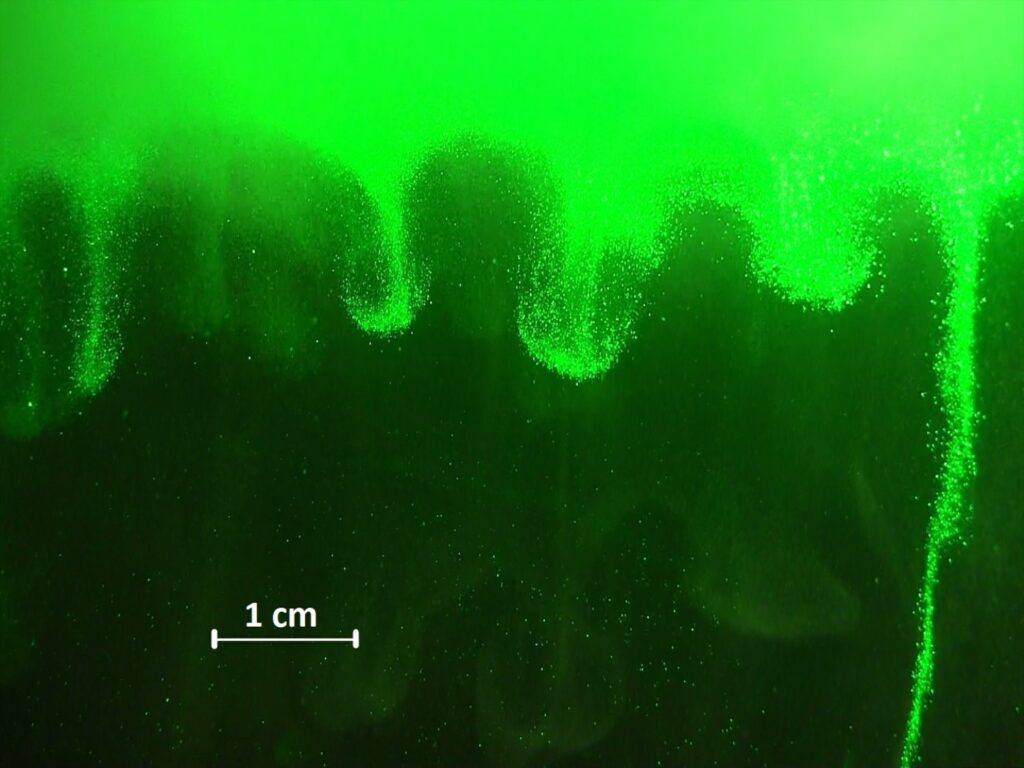
This work focuses on depositional processes in buoyant, mud-rich river plumes in deltaic settings. The speed at which sediment is removed from such plumes is thought to scale with the settling velocity of the individual or flocculated particles in the plume, i.e., with sediment size and excess density. However, some studies suggest that vertical flux may not be so simple. Various instabilities can result at the density interface that lead to more complicated depositional processes that may be a function of more than individual particle sediment size. This work compares the vertical transport rate of flocculated mud settling as individual particles to vertical transport rates in stationary and moving stratified layers. Funding Source: ACS Petroleum Research Fund. Image: Convecting sediment laden fingers of interface fluid. Student: Mohamad Rouhnia.
